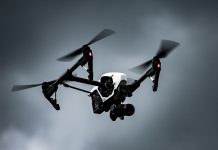Defense Advanced Research Projects Agency (DARPA) officials issued a Request for Information (RFI) seeking ideas on technologies that could potentially help them improve protection of fixed and mobile ground and naval forces against a variety of small unmanned air systems (sUAS) threats and tactics.
The information may potentially support the development of new DARPA programs that could enable a revolutionary layered defense approach to achieving mobile force protection, including counter-unmanned air systems (CUAS) capabilities.
“DARPA is interested in identifying novel, flexible, and mobile layered defense systems and component technologies to address this increasingly important issue as well as conventional threats,” said Jean-Charles Ledé, DARPA program manager.
“We’re looking for scalable, modular, and affordable approaches that could be fielded within the next three to four years and could rapidly evolve with threat and tactical advancements.”
This area of warfare is one the military services have grown increasingly worried about:
“The rapid evolution of small unmanned air systems (sUAS) technologies is fueling the exponential growth of the commercial drone sector, creating new asymmetric threats for warfighters. sUASs’ size and low cost enable novel concepts of employment that present challenges to current defense systems. These emerging irregular systems and concepts of operations in diverse environments require technology advancements to quickly detect, identify, track, and neutralize sUASs while mitigating collateral damage and providing flexibility to operations in multiple mission environments.”
According to DARPA, it will review the RFI responses to assess technology and system relevance, potential performance capability, and technology maturity. Based on this review, DARPA may invite submitters to attend a Mobile Force Protection workshop at the Agency’s offices in Arlington, Va., to be scheduled for late September 2016.







